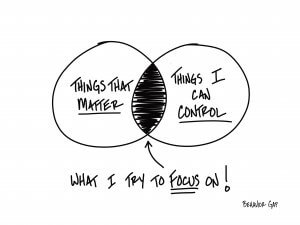
Avoiding “Financial Avoidance”
Financial PlanningApr 03, 2024
April is “Financial Literacy Month”. It is a good time to highlight an increasingly common occurrence: people avoiding their finances. It is so common it even has a term. It is called financial avoidance. Like a person who hates flying will avoid airplanes, or someone who has a fear of heights won’t visit the Empire State Building, people anxious about their money tend to ignore it. It is a coping mechanism that comes naturally to humans. While we tend to think this avoidance is prevalent for younger people, this is a common trait that all generations share. It is the financial equivalent of the ostrich sticking their head in the sand and we all do it. Why?
First, spending can often provide a short-term feeling of comfort in times of stress or uncertainty. It is not a coincidence that spending exploded while people were stuck at home during the pandemic. Everyone was looking to feel a little better. Dr. Vaile Wright studies stress and anxiety at the American Psychological Association and explained how spending tends to be more satisfying in the short-term than budgeting, even if we know intuitively it is not the best choice. Anyone who has spent time online shopping when they were stressed doesn’t need a doctor to tell them this.
Another issue driving avoidance is the financial industry itself. The people whose job it is to work with people on their finances aren’t always helping people feel better. The focus is often on selling products and can make people trying to improve their situation feel worse. Investor Bob Seawright wrote the following: “Many alleged experts in retirement planning are far too willing to offer advice without seeming to recognize the competing interests faced by those hoping to plan well. Much of what is called advice is really hectoring about the need to save more and to save more sooner and does not seem to recognize that alternative choices are not necessarily or entirely wrong.” It can’t just always be about saving because we are not retirement focused robots. We all have different goals, needs, and wants and the “right answer” is different for everyone. Telling someone who wants to pay for their children’s education, start a business, or buy a home that they should be saving more for retirement is not helpful. It can also just create MORE anxiety.
Steve Sandusky also puts it incredibly well: “As I think about the nature of retirement planning, it is highly left hemisphere focused. It’s all about finding ‘your number,’ developing detailed spreadsheets, determining assumptions for growth rates, tax rates, withdrawal rates, inflation rates, modeling spending patterns during go-go, slow-go, and no-go years, running Monte Carlo simulations until you reach an acceptable probability of success, and adding in some ‘cushion’ just in case. “But let’s face reality. Your life cannot be spreadsheeted.” That last sentence sums it up well: your life can’t be spreadsheeted.
In an episode of our podcast, guest Tom Morgan talked about that very idea of the left brain vs. the right brain. He described it like this: “A bird uses its left hemisphere to identify if a grain is food or sand, while simultaneously using its right hemisphere to be on guard for predators. Narrow focus and broad focus, simultaneously and in balance. Without the narrow focus of the left you can’t interact with the world and sort things into categories, without the right you focus too narrowly and get eaten by a cat.” We need to find that same balance between a narrow and broad focus when it comes to our money. This lack of balance is causing so much anxiety many are ignoring their finances altogether. That needs to change.
We need to focus on a process that fits the fluid nature of our lives. The reason the process of financial planning is more important than the answers it gives you is because the answers are always changing. Life happens- job changes, babies, marriage, divorce, retirement. These are all times in life when what is important will shift, and a good process allows the plan to change accordingly. There is no magic formula because every single situation is unique. Financial planning is as much an art as it is a science. The financial industry has to get better at acknowledging this.
It does not matter if you are 22 or 82, just getting started with a process can go a long way. Rubin Miller explains- “Like fitness or dieting, just starting is hard. But unlike fitness or dieting, you only need to address this once. You don’t need to keep showing up — you’re creating a system, not a schedule.” Designing a system is important because it automates things for your current situation. Think of it like budgeting in reverse- if you fund each of your priorities appropriately without having to think about it, it allows you to spend more freely and avoid the anxiety that comes with avoidance and a lack of clarity. As your life changes, so will those priorities.
Financial planning at its core comes down to designing a process that fits your life rather than a math equation in a spreadsheet you need to follow. As the Director of The Design Lab at the University of California Don Nelson once said: “Good design is actually a lot harder to notice than poor design, in part because good designs fit our needs so well that the design is invisible.”
Citations:
They Can’t Even: A Generation Avoids Facing Its Finances, Oyin Adedoyin, Wall Street Journal, April 17, 2023
Realistic Retirement Planning, Bob Seawright, The Better Letter, April 6, 2023
To Hell With “Better Mousetraps”, Rubin Miller, Fortunes & Frictions, April 23, 2023


